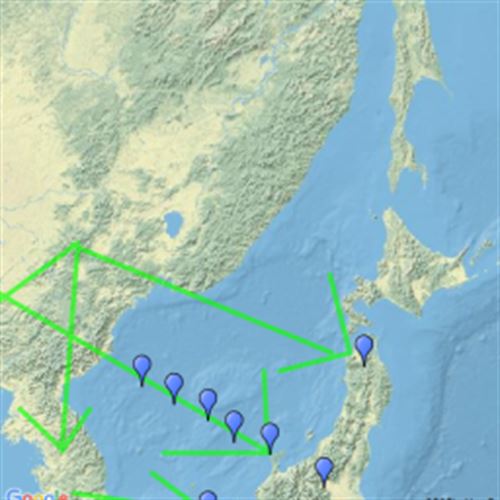Within the complex tapestry of human civilization, cultural diffusion serves as an unseen sous-chef, deftly blending the ingredients of diverse heritages into the culinary fabric of society. In the United States, a land characterized by its ethnocultural melting pot, the phenomenon of cultural diffusion manifests in myriad ways, shaping the nation’s identity in profound and often unexpected manners. This exploration delves into the various facets of cultural diffusion in the U.S., presenting an intricate panorama that highlights the interplay of history, geography, and sociopolitical influences.
The notion of cultural diffusion can be likened to the gentle ebb and flow of tides, gradually reshaping the shoreline of collective identity. From the initial waves of migration to the contemporary firing of ideas in the digital age, the U.S. has been significantly influenced by the intermingling of traditions, languages, and customs. The earliest inhabitants of the continent, including indigenous tribes, laid the groundwork for a rich cultural diversity that would continue to evolve with the arrival of European settlers, enslaved Africans, and more recent immigrant groups from Asia, Latin America, and beyond.
Geographically, the U.S. serves as a vast canvas for the diffusion of culture. Each region boasts unique influences, informed by a confluence of climatic conditions, historical pathways, and economic opportunities. The southern states, for instance, resonate with the rhythms of jazz and blues, musical genres entrenched in African American history and the struggles of the Deep South. Conversely, the Pacific Northwest vibrates with elements of Indigenous traditions and sustainable living, reflecting the region’s deep connection to its natural surroundings.
Urban centers, such as New York City and Los Angeles, act as cultural epicenters, magnetically drawing individuals from diverse backgrounds. In these metropolitan hubs, neighborhoods become microcosms of global society, with restaurants serving authentic curries, taquerias dishing up tacos, and markets brimming with spices from around the world. Each culinary establishment stands as a testament to the diffusion of cultural expressions; they serve not only to satiate hunger but also to nurture connections among people of varying heritages.
The prevalence of multilingualism in these urban locales exemplifies another dimension of cultural diffusion. A walk through New York City’s streets unveils a symphony of languages, each syllable resonating with ancestral echoes from faraway lands. Here, cultural diffusion becomes a dialogue—a meeting of minds and experiences that enrich the social fabric. The linguistic tapestry is frayed at the edges with gaps of understanding, yet it remains vibrant and intricate, bridging worlds through shared stories and experiences.
Moreover, the role of technology in cultural diffusion cannot be undervalued. In our hyper-connected world, the information superhighway facilitates instantaneous exchange of ideas, transcending geographical boundaries. Social media, for instance, acts as a modern-day agora where memes, art, and cultural phenomena proliferate at remarkable speeds. Fusion cuisine, a trend emblematic of contemporary cultural exchange, is emblematic of this evolution; culinary boundaries are blurred, creating enticing dishes that tell stories of diverse histories intermingling on a single plate.
The world of art is another poignant example of cultural diffusion. Artists frequently blend techniques and sensibilities from different traditions, resulting in works that resonate across cultural divides. Street art, for example, often tells the stories of a community’s struggles while simultaneously echoing global themes. Murals and graffiti serve as the voice of the marginalized, at times resonating with viewers on both local and international stages, thus further promoting the diffusion of ideas and ideologies.
However, the phenomenon of cultural diffusion in the United States is not without its complexities. The challenges of assimilation versus cultural preservation pose significant questions for communities navigating their identities in a rapidly changing society. The tension between being a part of the larger American landscape while retaining unique cultural traits can lead to a rich diversity, but it also requires careful negotiation. Consider the ongoing conversations surrounding the preservation of Indigenous languages and traditions in the face of modern societal pressures. The revitalization efforts of these cultures exemplify resilience, asserting a powerful narrative amidst the forces of cultural homogenization.
In education, cultural diffusion finds its way into curricula that embrace a multicultural perspective. Schools in varying districts may offer courses that critically examine the contributions of diverse groups to American history, providing students with a holistic view of their nation’s evolution. This pedagogical approach champions inclusivity, fostering respect and understanding among future generations, and ensuring that the mosaic of cultures continues to thrive.
The intersection of cultural diffusion and environmental awareness similarly shines a light on the pressing issues of our time. The diverse practices of sustainability practiced by cultural communities illustrate the collective wisdom gained over generations. Traditional ecological knowledge, the culmination of insights held by Indigenous populations, offers invaluable perspectives on land stewardship and climate resilience. These practices serve as a reminder that conservation and cultural traditions are intertwined, prompting a re-evaluation of how society interacts with the environment.
Ultimately, cultural diffusion in the United States is an ongoing narrative filled with threads of innovation, resilience, and interconnection. From the music that plays in the background of everyday life to the flavors that tantalize the palate, the spirit of cultural diffusion permeates the nation. It is an intricate dance of adaptation and resistance, informed by history but also driven by the aspirations of future generations. This cultural odyssey not only enriches individuals but also propels society forward, gently reminding us that we are all part of an intricate global tapestry, interconnected through our shared experiences and collective histories.
